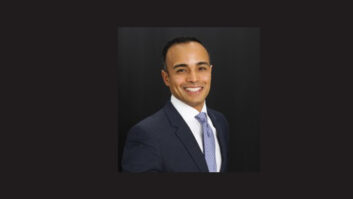AM revitalization has been quite a ride so far, and we’re not done yet.
In late 2015, the First Report and Order was released, and in that document, the FCC gave AM broadcasters the promise of a number of “AM on FM” (technically “AM fill-in”) translator filing windows, relaxation of community coverage standards day and night, elimination of the “ratchet rule,” wider implementation of power-saving MDCL technology and relaxation of antenna efficiency standards.
In the year since those new rules went into effect, I have seen broadcasters take advantage of them, keeping AM stations alive that might have otherwise died off because of site issues and whatnot.
Also in that year, I have personally been involved in a whole stack of translator moves, pairing those translators with AM stations to give them both an FM frequency and a full-time presence (where some of the AM stations are either daytimers or have a significant power reduction at night).
THIS IS HUGE
In its February open meeting, the Pai FCC handed AM broadcasters another gift: relaxation of the AM fill-in translator siting rule. Until this rulemaking, AM broadcasters using FM translators had to show that the translator 60 dBu contour would be fully encompassed by a 25-mile radius from the AM transmitter site and the AM station’s 2 mV/m daytime contour. For stations serving small markets and where the AM site is located close to the community to be served, this wasn’t much of a problem, but for others, it was a significant constraint.
For example, stations that either operate in zones of good conductivity or with higher power serving communities located at some distance from the AM transmitter site were at a significant disadvantage. The 25-mile radius provision often kept such stations from locating a translator where it was needed: in the target community.
The revised rule, which is detailed in the Second Report and Order in the Revitalization of the AM Radio Service proceeding (MB Docket No. 13-249), keeps the same two metrics — the 25-mile radius from the AM site and the 2 mV/m daytime contour — but it allows location of fill-in translators so that the translator 60 dBu contour is encompassed within the greater of the two. That means that as long as an AM station’s 2 mV/m contour extends over a community, that station could conceivably site a translator in that community, subject of course to protection of other FM allocations.
This is huge! The reality for many AM stations is that their target communities or markets are quite often located some distance from the AM site. In large markets, the market itself may extend well beyond 25 miles across, so even if the AM site were located at city center, there would be some areas within the market that would be ineligible for a fill-in translator.
This new rule also dovetails nicely with the relaxation of the community coverage standards that were enacted in the First Report and Order. If it becomes necessary for a station to relocate its transmitter site farther from the community, as long as the 2 mV/m contour of the relocated site encompasses an area, a translator could be conceivably located there.
MORE TO COME
We are far from done with AM revitalization. The First Report and Order contained both a Further Notice of Proposed Rulemaking and a Notice of Inquiry that address a number of outstanding proposals and possible future action items.
For example, a change in AM protection standards was proposed, including a change in nighttime and critical hours protections for Class A stations. That one change, depending on what form it may finally take (if it occurs at all), would mean extended operating hours — perhaps even full-time operation — for a lot of daytimers that now have to go off at night to protect domestic Class A stations, and for even full-time stations that must protect domestic Class A stations at night, it could mean more transition hours and nighttime power and coverage.
Another proposed rulemaking would do away with adjacent-channel contributors in night RSS calculations, and such calculations would employ 50 percent exclusion (instead of 25 percent exclusion as the existing rules require). That would give a lot of stations some real night improvement options.
Yet another proposal would change the daytime protection ratios of Class B, C and D stations, going back to a 0 dB first-adjacent channel protection ratio (from the present 6 dB) and changing the normally protected contour to 2 mV/m (from the existing 0.5 mV/m). This would provide lower-power stations with the option to increase daytime power in many cases. The flipside of that is that it would also rob higher-power stations of some interference-free coverage area.
There are several other proposed rules in that batch as well, none of which have yet been acted on. It’s anyone’s guess at this point what the timetable for that is. Frankly, it was a bit of a surprise to me that the translator siting rule came out when it did. We may well see some of these proposals dealt with singly as that one was.
Whatever the eventual schedule, revitalization of the AM radio service has been a good thing so far. Hopefully, future rule changes in this initiative will take into account the greater good of the service. Despite an overall drop in AM listenership, stations with good content remain strong, and that would seem to be a good indicator. There is life in AM yet.
Cris Alexander is director of engineering of Crawford Broadcasting Co.












